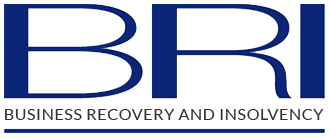A licensed Insolvency Practitioner, often referred to as an IP, is authorised to act in relation to an insolvent individual, partnership or company. IPs must follow the law, Statements of Insolvency Practice and other guidance issued by key stakeholders. The work of IPs is monitored by regulators to make sure they adhere to all of these.
At BRI Business Recovery and Insolvency, we currently have five licensed insolvency practitioners. Our team are here to help you and your company during times of financial difficulty, contact us today to discuss your situation.
What are an Insolvency Practitioner’s duties?
The primary duties of an insolvency practitioner when appointed liquidator are:
- To realise the assets of a company for the benefit of all creditors (predominantly with assistance from specialist agents who are appointed by the liquidators)
- Distribute monies to creditors (where possible)
Realising assets during liquidation
During liquidation, your insolvency practitioner will realise the assets of a company. Some of the most common assets include:
- Physical (or “tangible” assets) including buildings, plant and machinery, motor vehicles, furniture, equipment, fixtures and fittings, stock
- “Intangible” assets such as goodwill, customer list, patents, copyrights, website
- Outstanding sales invoices (or “trade debtors”)
- Monies owed by directors personally to the company (often referred to as an “overdrawn director’s loan account”)
- Refunds due from HM Revenue & Customs (“HMRC”), although they are entitled to set these off against monies owed to them
- Potential actions against directors personally (under specific sections set out in the Insolvency Act 1986)
What about specific assets that are subject to finance?
A common example is a motor vehicle that has been purchased under a hire purchase or finance agreement. In this case, the finance provider has a specific charge over the asset and receives all monies from the sale until paid in full. If the sale proceeds for the motor vehicle exceed the outstanding finance, then this “surplus” is paid to the appointed liquidators. If there is a shortfall to the finance provider, they will have a claim against the company and, potentially, the director if the finance agreement includes a personal guarantee.
What if book debts are factored or subject to an invoice finance agreement?
Assuming the charge over book debts is valid, the treatment is similar to specifically charged assets in that the invoice finance provider receives all monies from the collection of the debtors’ ledger until paid in full. Under the terms of the signed agreement, a termination fee may be invoiced to the company, which would also need to be paid in full. Again, any “surplus” is paid to the appointed liquidators, and any “shortfall” would be a claim against the company (and potentially the director).
What are the different classes of creditors in a liquidation?
When an insolvency practitioner is in a position to distribute monies to creditors, they need to give consideration to the different classes of each creditor; these classes are:
- Secured creditor with a fixed charge – normally a financial institution typically with a fixed and floating charge debenture over a company’s assets, which has been registered on public record at Companies House. Can only distribute in relation to net proceeds from the sale of fixed charge assets.
- Ordinary preferential creditors – typically employees and the Redundancy Payments Service (who have a subrogated claim for monies paid to employees) which can consist of:
- Pension deductions taken from employees but not paid to the pension provider
- Wage arrears up to £800
- Holiday pay that has accrued but not been taken
- Second preferential creditor (HMRC) – consists of the following claims:
- PAYE/Income Tax
- Value Added Tax
- Employee National Insurance Contributions
- Student loan repayments
- Construction Industry Scheme deductions
- Prescribed Part distribution to unsecured creditors
- Applies if there is a valid floating charge created on or after 15 September 2003
- Calculated as 50% of the first £10,000 (value of net property) and 20% of that part of the company’s net property which exceeds £10,000 in value to a maximum of £800,000
- Secured creditor with a floating charge – in addition to the first distribution above and relates to net realisations (after deduction of the Prescribed Part) from floating charge assets.
- Unsecured or non-preferential creditors (which is in addition to any distribution under the Prescribed Part set out above) – typically the majority of creditors (in number) and potentially in value as well.
Do unsecured creditors receive any funds from a CVL?
It is very much dependent upon the level of asset realisation achieved by the Insolvency Practitioner that determines the outcome for the unsecured creditors. However, one of the main effects of granting HMRC second preferential status after 1 December 2020 is that the likelihood of a distribution to unsecured creditors has reduced. In many liquidations, the amount owed to HMRC is substantial, meaning that there are no funds available to distribute under the Prescribed Part to the floating charge creditor(s) or unsecured creditors.
BRI Insolvency Practitioners
If you are looking for an insolvency practitioner or want to ask questions about your company liquidation, contact the team at BRI today.
